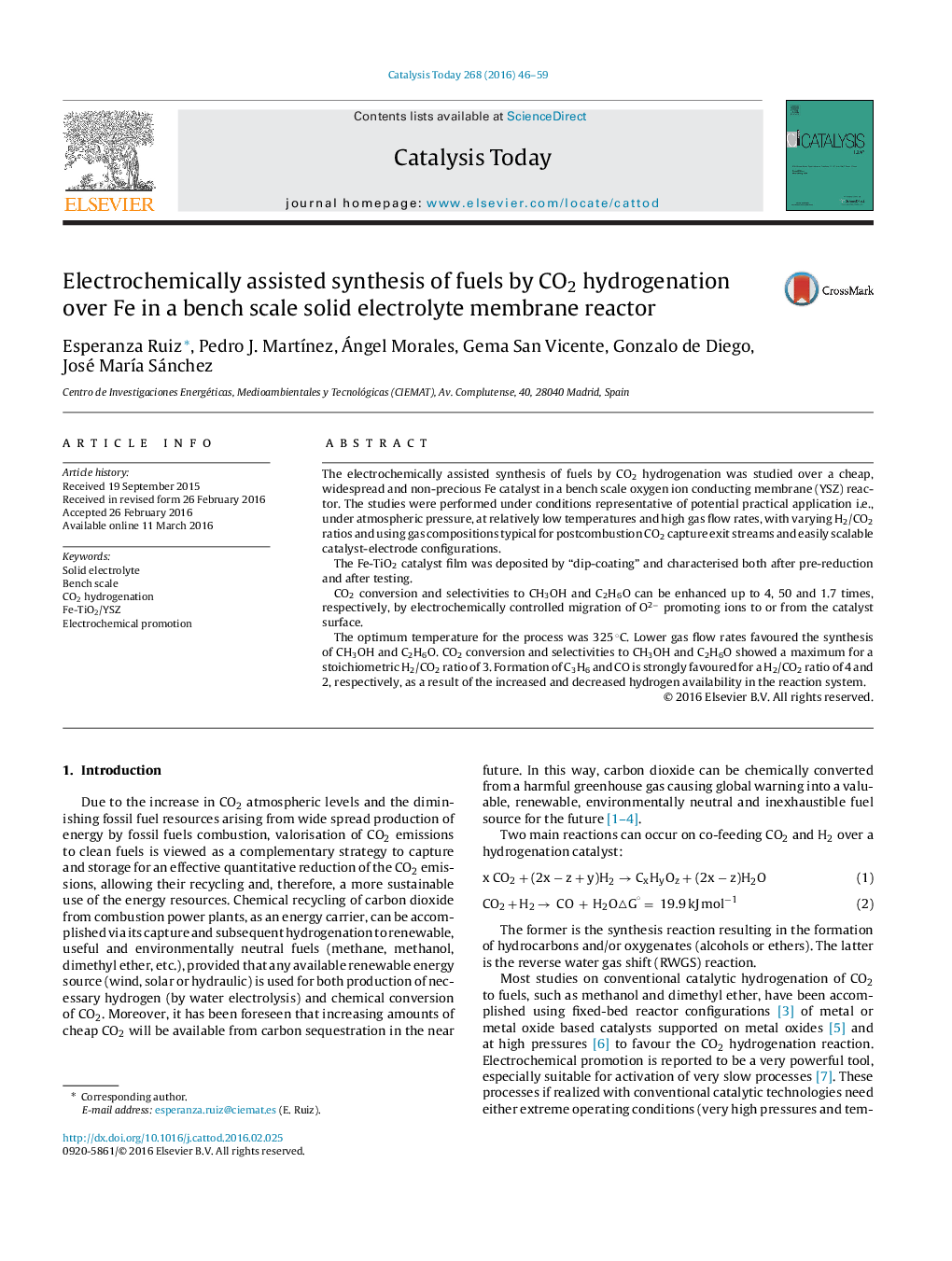| Article ID | Journal | Published Year | Pages | File Type |
|---|---|---|---|---|
| 53335 | Catalysis Today | 2016 | 14 Pages |
•Electroassisted CO2 hydrogenation on Fe/YSZ under realistic conditions.•Boost on CO2 conversion and fuel selectivity by transfer of O2− to or from Fe.•Selectivity to C2H5OH rose and to CH3OH and C2H6O decreased with flow rate.•Maximum CO2 conversion and selectivity to CH3OH and C2H6O for H2/CO2 = 3.•Formation of C3H6 and CO favoured for a H2/CO2 ratio of 4 and 2, respectively.
The electrochemically assisted synthesis of fuels by CO2 hydrogenation was studied over a cheap, widespread and non-precious Fe catalyst in a bench scale oxygen ion conducting membrane (YSZ) reactor. The studies were performed under conditions representative of potential practical application i.e., under atmospheric pressure, at relatively low temperatures and high gas flow rates, with varying H2/CO2 ratios and using gas compositions typical for postcombustion CO2 capture exit streams and easily scalable catalyst-electrode configurations.The Fe-TiO2 catalyst film was deposited by “dip-coating” and characterised both after pre-reduction and after testing.CO2 conversion and selectivities to CH3OH and C2H6O can be enhanced up to 4, 50 and 1.7 times, respectively, by electrochemically controlled migration of O2− promoting ions to or from the catalyst surface.The optimum temperature for the process was 325 °C. Lower gas flow rates favoured the synthesis of CH3OH and C2H6O. CO2 conversion and selectivities to CH3OH and C2H6O showed a maximum for a stoichiometric H2/CO2 ratio of 3. Formation of C3H6 and CO is strongly favoured for a H2/CO2 ratio of 4 and 2, respectively, as a result of the increased and decreased hydrogen availability in the reaction system.
Graphical abstractFigure optionsDownload full-size imageDownload high-quality image (166 K)Download as PowerPoint slide
